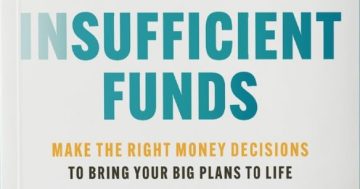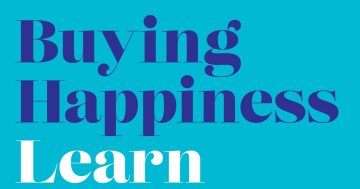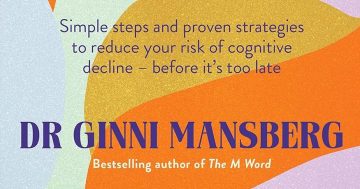Eric Roberge* says that as we move up in the world, we treat ourselves along the way, but getting carried away could ruin our chance at real wealth.

Photo: Bruce Mars
If you’re like most people, the more you earn the more you spend.
That phenomenon is known as “lifestyle creep”, or lifestyle inflation, and it’s one of the biggest factors that stops most people from growing their wealth.
When you can’t create a buffer between your income and your spending, you’ll find yourself trapped in a pay cheque to pay cheque cycle, dependent on earning more money to maintain your lifestyle.
Living pay cheque to pay cheque doesn’t just happen to people struggling to get by.
I’ve seen people making over $250,000 per year barely keeping up because every cent they earn goes right out the door.
Living just at your means isn’t enough
If you want to grow significant wealth, you need to live significantly below your means.
In other words, you need to carefully manage lifestyle creep and keep a big gap between how much you earn and how much you spend.
The money in that gap can then go to savings and investments.
So how do you do it?
Good news: I’m not here to tell you to stop spending money on your daily coffee.
This isn’t about nitpicking your expenses.
It’s more about big-picture choices — meaning major lifestyle decisions like where you live and what kind of car you drive, not whether you buy your lunch out a few times a week at work.
As your income grows beyond what’s necessary to cover the necessities and your baseline bills, you start getting a choice in how much you can spend.
And every time you choose to spend a little more, that means by default, you also choose to save a little less.
This doesn’t matter quite so much when we’re talking small sums each month (although you still need to at least be aware of those, as they do add up over the year).
It’s when you start to make huge decisions, like jumping from a $2,000-a-month apartment to a $4,000-a-month apartment, that the impact becomes real.
Doing so plugs a fixed cost into your spending that you now have to deal with month after month, and it can demolish your ability to save.
Notice that we’re talking about choices here.
Even though something like rent or a mortgage is a fixed expense and part of what you need to pay to live, the upgrade is something that’s up to you.
It’s a choice, and each time you make the decision to give yourself a little lifestyle boost, you are also hurting your ability to grow your wealth.
I recently allowed myself a little lifestyle creep
Here’s a good rule of thumb to keep in mind: the more you choose to spend today, the less financial freedom you may have down the road.
When it comes to making choices, you need to consider that and decide for yourself if that trade-off is worth whatever you’re upgrading to.
Keep in mind that lifestyle upgrades aren’t always bad.
It’s also not necessarily “bad” to increase your spending.
Doing so without thinking, or without considering how the increase will impact your future, is where things get problematic.
We all reach points where we know we’re going to make a change and our spending is likely going to go up no matter what.
I just did this in my own life: my fiancee and I chose to move to a slightly more expensive apartment.
But we didn’t make that choice lightly.
We considered what the increased spending today might mean for our future — and we also looked at other expenses we could cut to offset a higher rent.
Most important, we made the decision only after determining that the increased expense would not affect our ability to hit our goal savings rate of 30 per cent per month.
Depriving yourself isn’t the answer, either
We also believe there’s a fine line between lifestyle creep and depriving yourself.
There’s a line between spending carelessly that puts you at risk of running out of money in the future and squirrelling away so much that you face a different type of risk: not truly living while you have the chance.
If you continue to keep a tight budget and never allow for an increase in your lifestyle spending, you put your enjoyment of today at risk.
And I think that’s just as bad as risking your future financial freedom, because who knows what will happen tomorrow?
You need to find the sweet spot between living well today and saving responsibly for the future.
Find the sweet spot between living well and saving
There’s no way to know how much money you can spend today without looking at the projections for tomorrow.
Of course, this is where things get complicated — because not running out of money is probably just one of your goals.
You may also want to account for adding to your family, starting a business, or retiring early to travel the world.
Getting this decision right about how much spending to allow is critical, because you don’t want to end up backing yourself into a corner.
You always want to have some wiggle room so that with any decision, you have a choice on which way to go.
To have a choice, you have to build in a buffer between your income and your spending.
Two steps we all can take
Here are two things I suggest doing:
- Be very careful with the fixed expenses you take on, because they tend to give you no way out if you need one (other than a dramatic lifestyle change).
- Save more than you think you need to save.
If you need a more specific starting point, then look at your savings rate.
I believe 30 per cent is a good rule of thumb to keep yourself in great shape.
If you have the money and you’re not saving 30 per cent, start there.
At some point you need to figure it out in more detail, but this will get you on the right track.
* Eric Roberge is the founder of Beyond Your Hammock, a virtual financial planning firm. He tweets at @beyondfinances.
This article first appeared at www.kiplinger.com.











